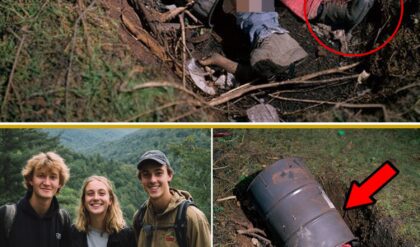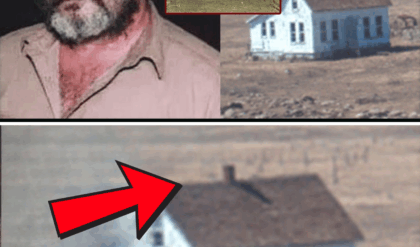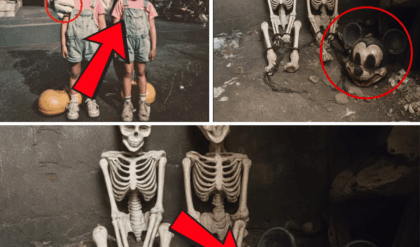It begins with a phone call.
A voice trembling.
A question that freezes the world: “Have you seen her?”
That’s how every missing person story begins — not with drama, not with music, not with closure — but with confusion, fear, and a hope so fierce it refuses to die.
In The Lovely Bones, Susie Salmon’s family lives that nightmare. They wait, they search, and they never find her body. It’s fiction — a haunting piece of cinema that speaks of loss, innocence, and the cruel limbo between life and death. But for thousands of real families around the world, this story is not art. It is their reality. A wound that never heals. A goodbye that never comes.
The agony of not knowing
Grief is supposed to have stages — denial, anger, bargaining, depression, acceptance. That’s what the books say. But how do you accept what you don’t know?
How do you bury someone when you don’t have a body, when you don’t have answers, when all you have are memories and questions?
Psychologists call it “ambiguous loss” — the cruelest kind of mourning. It’s a grief without an end, because the story never closes. Families are trapped in a loop between hope and despair. One day they imagine the missing person is alive somewhere, building a new life. The next, they accept the possibility of death. And the day after, hope creeps back in, whispering, “Maybe she’s out there.”
In The Lovely Bones, we see Susie’s family crumble under that weight. Her mother drifts away, her father obsesses over finding the killer, her sister grows up in silence. It’s not just fiction — it’s a mirror of what countless families endure every single day.
Real stories, real pain
In India, over 200,000 people go missing every year. In the United States, the number hovers around 600,000. Some are found. Many are not. Behind every statistic is a family that cannot sleep, cannot eat, cannot move on.
Take the story of Meera Sharma from Delhi. Her daughter vanished on her way home from school in 2013. The police searched for months, volunteers distributed posters, and news channels flashed her photo. But as the days turned into weeks, and weeks into years, Meera’s house became a museum of her daughter’s life — her toys untouched, her bed neatly made, her clothes folded as if she might return any moment.
When asked what hurts most, Meera said softly, “It’s the waiting. Every morning I wake up thinking, maybe today. Maybe this will be the day someone calls.”
Her voice breaks. Then silence follows — the kind that feels heavier than grief itself.
The endless waiting
Families of the missing live in two worlds at once. One world is filled with reality — bills, neighbors, unanswered calls, fading photos. The other is built from imagination — what ifs, maybes, and dreams.
They cling to hope like oxygen, because letting go feels like betrayal. If they stop searching, it means accepting death. But if they keep searching, it means living with heartbreak.
Every ring of the phone, every knock at the door, every news story about a body found somewhere — it brings a wave of fear and hope colliding into one unbearable emotion.
A mother once said, “Hope is both my medicine and my poison.” She was right. It keeps them alive. It also kills them slowly.
The missing and the media
When a child disappears, the first few days decide everything. Media coverage, police attention, public empathy — they all fade with time. What begins as national outrage often ends as silence.
Only a few cases stay alive in the public eye — usually because of age, beauty, or mystery. But for every case that becomes a headline, there are thousands that don’t.
These forgotten names remain on notice boards in dusty police stations, their files buried under newer cases. Yet for their families, time never moves. Each year on the same date, they light a candle, whisper a prayer, and wait for a miracle that never comes.
The emotional aftermath
Ambiguous loss doesn’t only affect the heart — it eats away at identity, faith, and relationships.
Spouses drift apart. Siblings grow up in silence. Parents become shadows of themselves. Some turn to religion, others to activism. A few, unable to bear the weight, take their own lives.
A father once told a counselor, “I talk to her every night in my head. I tell her to come home. Sometimes I think she hears me. Sometimes I think I’m going mad.”
He is not mad. He is grieving the ungrievable.
The search for closure
Closure is a beautiful word — simple, comforting, final. But in cases of disappearance, closure is a luxury most never get.
Police investigations may end, but the family’s search never does. Even if years pass, even if they move houses or cities, they carry the absence with them like a ghost that follows quietly.
Some turn their pain into purpose.
In Mexico, mothers of the disappeared form search brigades, digging through fields and forests, hoping to find remains. In Argentina, the “Abuelas de Plaza de Mayo” spent decades searching for children stolen during the dictatorship. In the Philippines and India, NGOs help families track missing loved ones through online databases and DNA tests.
For them, even finding bones is a form of peace. It means the waiting is over. It means they can finally say goodbye.
The silent grief
What makes this kind of loss unbearable is how invisible it is. Society doesn’t know what to do with people whose loved ones are missing.
At funerals, we say, “He’s in a better place.”
To widows, we say, “Time will heal.”
But to the mother of the missing, what do we say? There is no language for it.
So they live quietly with their grief, attending others’ funerals but never their own. They smile politely when people say, “Maybe she’s fine somewhere.” They know that sentence is meant to comfort, but it only deepens the wound.
A film that mirrors reality
When The Lovely Bones premiered, it was described as a fantasy about the afterlife. But beyond the supernatural elements, it captured something painfully real — the paralysis of a family that can’t move on because there’s no body to bury, no truth to hold.
Susie’s voice narrates from the “in-between,” watching her parents and sister struggle to survive. That voice echoes the silent voices of thousands who are never found. If they could speak, they might say, I’m here. Please don’t stop looking.
The film’s message lingers long after the credits roll — that the living suffer the longest, trapped between faith and finality.
The universality of the pain
It doesn’t matter where you live — America, India, Spain, Brazil — the pain of the missing feels the same. The photo on the wall, the birthday that still gets celebrated, the plate still set at the dinner table.
Every culture has rituals for death, but none for disappearance. There is no prayer for uncertainty. There is only waiting.
A psychologist once described ambiguous loss as “the most stressful form of human loss.” Because it lacks clarity, the mind can’t process it. The brain keeps searching for answers that don’t exist. It’s an open wound that the body keeps trying to heal, but can’t.
The cruel hope
Hope, in these stories, is both enemy and ally. It keeps parents breathing, but it also prevents them from mourning. It fuels the search, but denies acceptance. It whispers, “What if?” every time they try to move forward.
In one haunting interview, a mother of a missing boy said, “If someone told me he was dead, I’d cry for the rest of my life. But at least I’d know. Now I don’t know what to cry for.”
That is the essence of this pain — not death, but the absence of truth.
The need for compassion
When we watch a movie like The Lovely Bones, we leave the theater and go back to our lives. But for families like Meera’s, the movie never ends. The credits never roll.
As a society, we owe them more than sympathy. We owe them visibility, support, and acknowledgment. Not every story ends with rescue. Not every disappearance becomes a case solved. But every missing person deserves to be searched for — and every family deserves to be heard.
The unfinished goodbye
There’s a scene in The Lovely Bones where Susie says, “My name is Salmon, like the fish. First name, Susie. I was fourteen when I was murdered.”
She says it with eerie calm, as if she has already accepted her fate. But her family, trapped in the world below, cannot.
That’s what makes the story unforgettable — it isn’t about death. It’s about the living who remain behind, trying to make peace with an ending that never came.
And in the real world…
Some families are still waiting. Decades later, they still look at the door every evening, still listen for footsteps that never arrive. Their hearts live in the gap between yesterday and tomorrow.
They are invisible heroes of grief — enduring what most of us couldn’t bear for a single week. Their strength lies not in acceptance, but in endurance. In waking up each morning and choosing to hope again, even when it hurts.
A truth we must remember
The story of Susie Salmon may be fiction, but the emotion it evokes is achingly real. Every time we see a missing poster, every time a news alert flashes another disappearance, we must remember: behind that photo is a family whose life is frozen in time.
Maybe the real tragedy isn’t that people go missing. Maybe it’s that we stop looking, we stop caring, we stop remembering.
For the families still waiting, remembrance is the only thing that keeps their loved ones alive.
The lesson
Grief is universal, but closure is not. Some people get to bury their dead. Others spend their lives searching shadows.
In the end, the story of Susie Salmon teaches us that love doesn’t die — it just waits. It waits through years, through silence, through the cruel uncertainty that life sometimes brings.
And for those still waiting in the real world, perhaps that’s the only truth that keeps them breathing. That even when the world forgets, love never does.
Because love, like the pain of not knowing, never ends.





